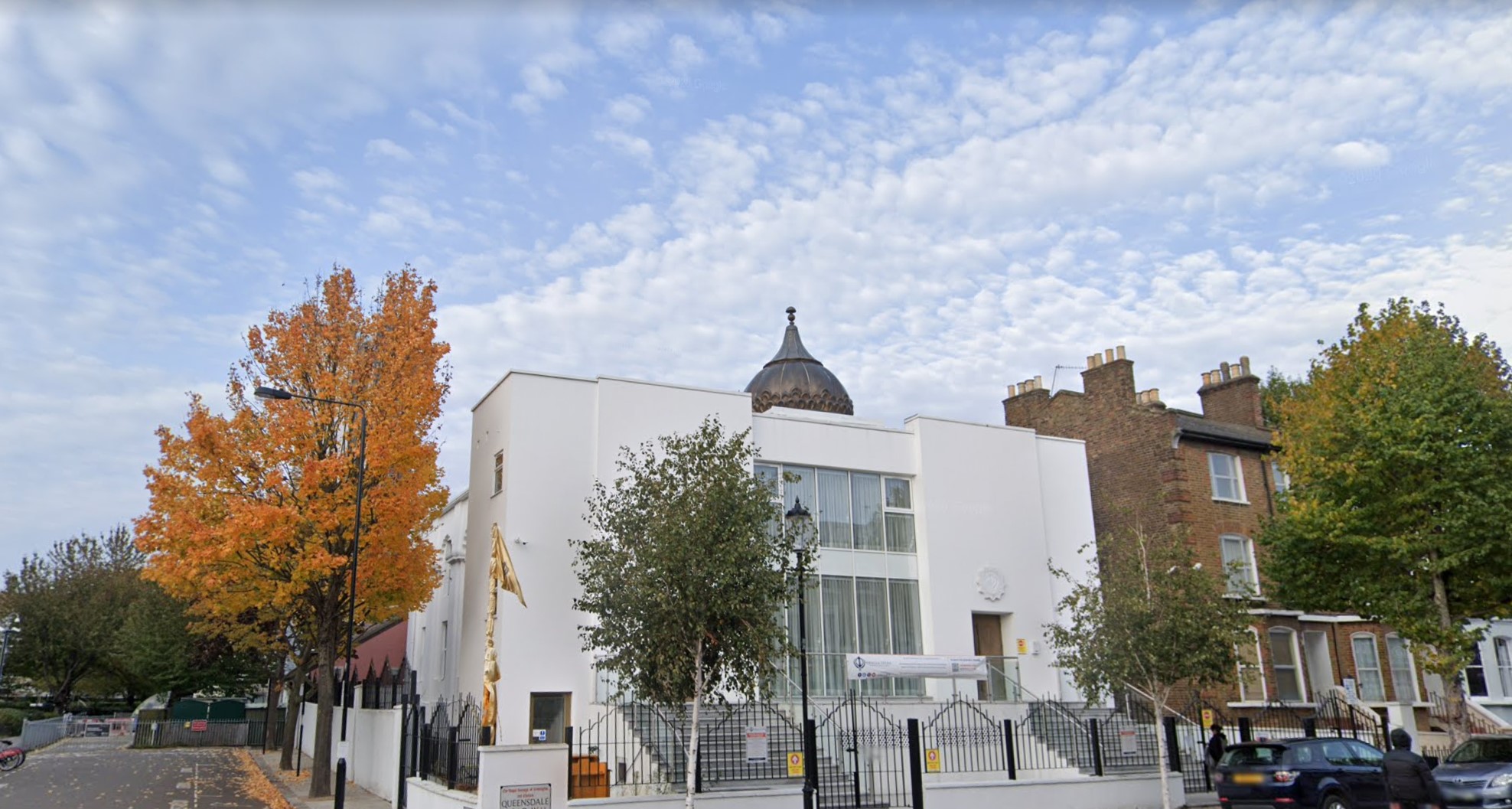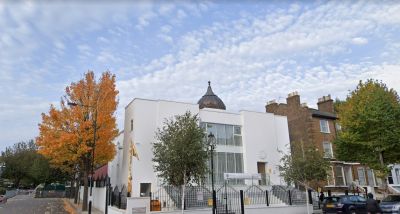To start the day, we met up for our usual class session which takes place in the basement of our hotel, St. Athans. Today’s class revolved around a poem called “Prayer for Gurdwara” by poet Daljit Nagra. We spent most of the time in partner groups, dissecting phrases and Googling unknown words.
Working with Claire as my partner, we found that Nagra’s phrase “My satellites of Amritsar, bowed upon / each shul and church when an Almighty is in every heart” points to how the Sikh faith believes that there is one God. While all faiths may call it by a different name, it is one same God.
After class, we met up outside of our hotel and walked as a group to good ol’ Russel Square station. We took the tube to the oldest Sikh temple, or “gurdwara,” in Europe, Kalsa Jatha. We identified the gurdwara by a tall flag pole raising the Sikh flag and were greeted at the doors by our friendly guides.

After receiving our bright orange head coverings, taking off our shoes, and having a glass of water, we made our way into the diwan hall where worship for the congregation takes place. A massive crystal chandelier hangs from the ceiling. At the front of the room, placed on an elaborately decorated platform called Manji Sahib, rests the Guru Granth Sahib, a scripture written in verse and including writings from faiths beyond Sikhism. This scripture replaced human gurus at the start of the eighteenth century and is seen as more of a guide than a mere physical book.
One of the instructions for worship given to Sikhs is about repetition as meditation. Sitting in the diwan hall, we chanted “Wahey,” on the inhale, and “guru” on the exhale. As another important value of Sikhism is sound and vibration, we were encouraged to focus on our voices. When leaving that space and heading into the presentation, we all got a scoop of a pudding treat called Karah Prasad. It was very tasty and almost reminded me of peanut butter.
During our presentation, we learned that although Sikhism is described as monotheistic, pantheistic, meaning that they believe God is in everything and everyone, is a more accurate term. We also learned about important symbols and tenets of Sikhism, as well as much of the history. One detail that stood out to me was how putting people in boxes and needing clear-cut distinctions and definitions is very much a product of colonialism. In the Sikh faith, there is less emphasis on that and it is understood that things often overlap in their nuance and depend on the context.
Leaving that space with some of my questions answered, we had our langar meal. Among other yummy things, it included roti, rice, dal, and even a scoop of ice cream! All gurdwaras offer langar meals, where anyone, of any faith, can come at any time of day and get a free meal.
My usual crew made up of Jakyra, Aeryana, and Claudia made our way to Regent’s Park, London’s largest park. After seeing how expensive admission to the Zoo was, we decided to sit on a patch of grass for a while. We saw lots of very cute puppies.
Finally, our class made the trek to Rich Mix, an arts center in the Shoreditch area of East London, for a poetry open mic night, featuring performances by Black British poets anthologized in the collections The Fire People and More Fiya.

Blog post provided by Mariela Esparza, a junior English and secondary education double major.





